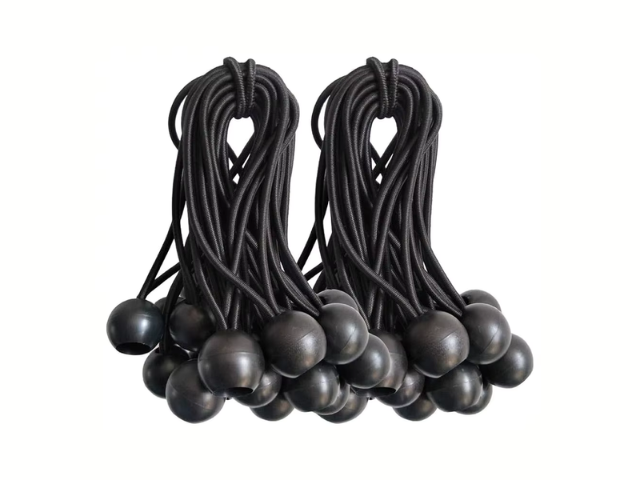Optimizing Bungee Canopy Usage for Long-Term Value
You understand the importance of having the right bungees when setting up a canopy for an outdoor event, a temporary workspace, or even in a farm storage area. Many people just grab the first stretchy bungee and hook the canopy, and, it is done. However, if you want your bungee canopy to buy you time, minimize cost in the long run, and save you cost in the long run, you need more than just procrastination. Optimizing your bungee canopy usage is not extra work, it is the right work. Whether you need seasonal farming, outdoor markets, or equipment storage, you will lessen the bungee replacement and hassle if you utilize your bungees accordingly. Here are the most important ways to ensure your bungee canopy will work as hard as you do for the long run.

Selecting the Best Bungees for Your Canopy
The best way to optimize your bungee canopy is to first identify the best bungees to buy for it. Using the wrong bungees will shorten your canopy’s lifespan. On average bungee cords do last a long time, but thin low quality bungees that stretch too far or snap cause a high rate of replacements. Lower quality bungees also pose a risk to your canopy by damaging it when a bungee fails while the canopy is being used, it is also time consuming and costly to replace bungees when they fail.
What do bungees have to be made of to be of good quality? Good quality bungees consist of a sturdy rubber which retains its elasticity regardless of the weather. Bungees that are flimsy and have cracks are bungee cords that should be avoided. As for the length and strength, a bungee that is too short will strain when you try to hook it up and a long bungee will not hold the canopy taut. Most bungee setups will need to have bungees which will support the canopy fabric weight without stretching.
The ends of the bungees are also important. For bungee canopies, bungees with secure balls or hooks that are easy to attach are best. Since these bungees don’t let go easily, they are best to keep your bungee canopy secure even in high winds. Bungee configurations made for canopies at Blue Ocean and other brands will help keep your bungee canopy in top form. Having to choose carefully will not avoid the cost of replacing broken bungees with damage to the canopy, but also keep the bungee canopy from giving frustrating results.
Getting the Right Installation for the Bungee Canopy to Last
Avoiding the cost of replacing broken bungees and damage to the canopy also depend on how well they are installed. This step of the installation process often involves the bungees in the canopy being hooked too tightly or too loosely and the bungees being put in too quickly. If the bungee is pulled too tightly, the bungee is will become too weak, and should not be relied on to stay intact. The bungee will eventually fail, especially when it is most needed like during a storm, and can destroy your canopy or bring the whole bungee structure down.
But if the bungee is too loose, the canopy is more likely to flap and send the fabric rub against the bungee or frame. After several weeks or months, the small rubs create holes, and you will have to replace the canopy sooner than expected. So how do you instal the bungee correctly? Begin by leveling and securing the frame. Then, attach one end of the bungee to the canopy’s grommet. Those are the small metal rings along the edges of the canopy. Pull the bungee until you reach the frame’s anchor point, and attach the other end. Tighten the bungee to the point where the canopy will not flap, however, do not tighten it to the point of straining in order to attach the bungee.
A good test to do after installation is to check the bungee. If the bungee is lightly trembling in a slight breeze, that's okay. It means it has some give and is working correctly. If the bungee is sagging, it means it is too loose. If the bungee is stiff, like a board, it means you pulled it too hard. It is worth the time to get the tension right. It will save the bungee canopy and keep it in good shape for years. No special tools are required for this. It just takes some patience and a quick check after you hook each bungee. No special tools are required for this. It just takes some patience and a quick check after you hook each bungee.
Just because you set up your bungee canopy, it doesn’t mean the work is done. You need to care for it like every other tool. You don’t have to spend hours maintaining it, though. Simple and quick weekly checks are enough. Low effort habits can truly make a positive impact.
First of all, it is crucial to build a habit of looking over the bungees and the canopy fabric after bad weather. I suggest looking over them after an intense sunlight spell, and after rain and wind. After a storm, look out for any bungees that may have become loose or stretched out. If bungees are losing their elasticity, for example, if they are longer than when you installed the bungees or if they feel soft and inflatable, you should remove them and replace them. If one bungee is bad, it will put extra tension on the rest, causing them to fail as well. Also, if the bungees are dirty, wipe them down. Over time, dirt and grime build-up breakdown rubber, and if you leave it for a couple of months, it will destroy the rubber. A damp cloth will do the trick. You will need to wipe it down with a cloth, no strong chemicals.
Finally, check the wear on the canopy fabric. Look for little tears near the grommets because that’s where the bungees pull the hardest. If there’s a little tear, patch it with a fabric patch kit found at most hardware stores. Then, to prevent the tear from getting bigger, take the canopy down when it’s not in use. To store it, fold the canopy and keep it in a dry and cool spot, like a garage or in a storage bin. Avoid leaving the canopy out in the sun and rain for long periods, even if it’s securely tied. The constant rust and extreme sun will weaken the bungees, and the canopy will not last as long.
These quick maintenance steps may seem inconsequential, but they save you in the long run. Taking 10 minutes every couple weeks to check the bungee canopy will save you from replacing the whole setup a year earlier than you should. It’s all about long term value.
Calculating Long Term Savings from Optimized Bungee Canopy Use
Getting value for your money is the key to optimizing your bungee canopy use. Canopies and bungee systems can be costly, and while there are plenty of ways to use your system more economically, if you want to save money long-term, skipping the steps on optimization will cost you in the long run.
Consider this example. A basic canopy costs 200 dollars and a cheap set of bungees is 20 dollars. If you don’t choose the right bungees and install them poorly while skipping maintenance, that canopy will only last a year. The bungees will break every few months, which means you will have to buy new bungees three times a year which costs 60 dollars. A year later the canopy fabric is torn and you have to buy a new one for 200 dollars. Over a 2 year period that equals 200 + 20 + 60 + 200 = 480 dollars.
Let’s consider optimizing the use of the bungee canopy. Let’s assume you spend a little more upfront–maybe 30 dollars for a set of high quality bungees, for example, Blue Ocean. If you take time to install them properly and do maintenance consistently, that same canopy could last three years as opposed to just one. You might only need to replace the bungees once every two years, meaning that over three years, you’ll spend a total of 30 + 15 (for one replacement set) = 45 dollars on bungees. In those three years, the canopy lasts three years, so you don’t need to replace it until the fourth year. In total, that’s 200 + 45 = 245 dollars–less than half of what you’d spend if you didn’t optimize. In three years, that’s 245 dollars as opposed to 200 + 45 = 245 dollars. You’ve saved a tremendous amount.
Those savings can add up, too! If you are using your canopy to cover your farm or business inventory, like hay, any damage to your canopy can mean damage to your cover products, too. If rain gets into your hay because of a loose bungee and spoiled feed, that is a direct loss of $500. Optimizing the bungee canopy can help you avoid these unexpected expenses. Not to mention, you won’t have to spend your busy day fixing a broken canopy or bungee replacement.
Optimizing your bungee canopy is not simply extending the life of the canopy. More importantly, it is the value of your time, which could be spent on other tasks, rather than the costly replacement and repair. It’s something that can pay off highly in the long term and doesn't take much work to accomplish.

